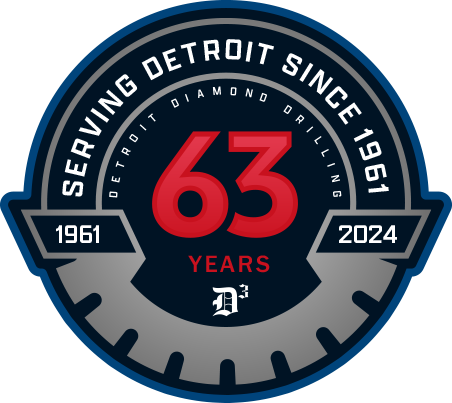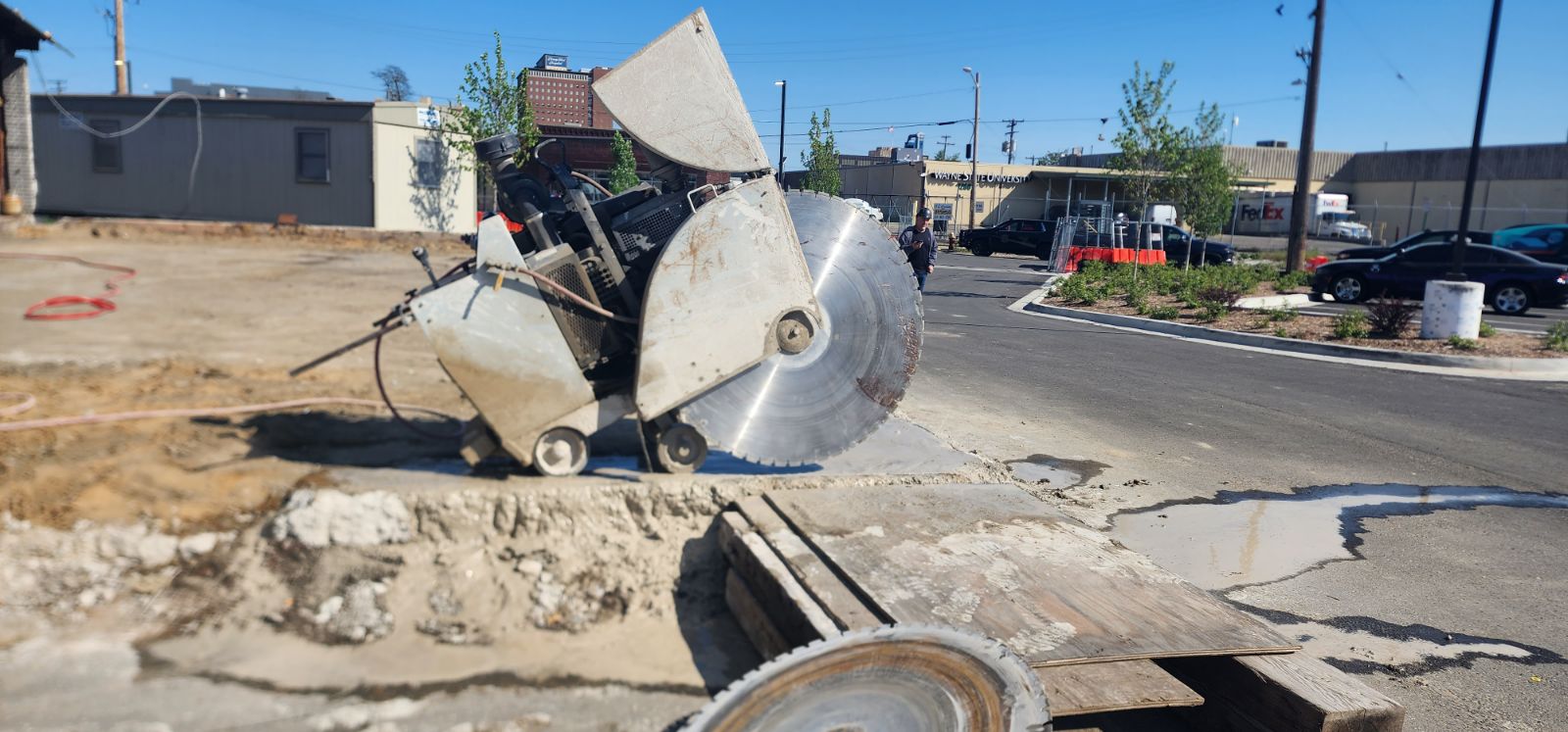Arborist Supplies: Essential Tools For Safe & Effective Tree Care
Professional arborists handle everything related to tree maintenance, from pruning and removal to hazard assessment and health care. Each project comes with its unique risks and demands, so using the right tools is crucial. The proper gear not only helps arborists work faster and more efficiently but also ensures compliance with OSHA standards, keeping crews safe on-site. This guide breaks down the essential tool categories that every arborist should rely on—from personal protective gear to rigging and rope systems.
Personal Protective Equipment (PPE) & Safety Supplies
Every arborist needs the right personal protective equipment (PPE) to stay safe on the job. Working with chainsaws, climbing trees, and handling heavy limbs exposes workers to serious hazards. Using proper PPE reduces the risk of cuts, impact injuries, and hearing loss.
Essential PPE for Arborist Work
- Helmet with Visor: Hard hats protect against falling branches, while visors shield the eyes from debris. ANSI Z89.1-compliant helmets offer proven impact protection.
- Eye and Ear Protection: Clear or tinted safety glasses rated to ANSI Z87.1 block dust, wood chips, and UV rays. For noisy jobs, earplugs or earmuffs should have a Noise Reduction Rating (NRR) of 22 dB or higher to reduce the risk of hearing damage from prolonged exposure to loud equipment like chainsaws and chippers.
- Cut-Resistant Gloves: Gloves made with materials like Kevlar or Dyneema protect hands during climbing, rigging, and chainsaw operation. Look for gloves that meet ANSI/ISEA 105 standards for cut resistance.
- Chainsaw-Protective Pants or Chaps: These garments contain layers of aramid fibers that can jam a chainsaw’s chain upon contact. ASTM F1897 is the U.S. standard for leg protection when using chainsaws. Proper fit and coverage are key for effectiveness.
- Steel-Toed Boots with Grip and Ankle Support: Boots must meet ASTM F2413 standards for impact and compression resistance. Deep lug soles improve traction on bark and wet surfaces. Reinforced ankles help prevent sprains during climbing and landing.
Meeting ANSI and OSHA Standards
PPE used by arborists must comply with OSHA 29 CFR 1910 Subpart I and relevant ANSI standards. These rules cover head, eye, face, hand, foot, and hearing protection on job sites. Employers must ensure all gear is properly rated and maintained. Regular checks before use help spot wear or damage that could reduce protection.
Climbing Gear
Climbing gear allows arborists to move safely among limbs and branches. Each tool is designed to support the body, distribute load, and reduce strain during extended periods of vertical work. Without proper equipment, climbing becomes unsafe and inefficient.
Ropes, Carabiners, and Ascenders/Descenders
- Climbing ropes must meet ANSI Z133 standards and typically range between 11 mm and 13 mm in diameter.
- Static or semi-static kernmantle ropes offer arborists low stretch and high strength for controlled lowering movements.
- Carabiners — metal loops made of aluminum or steel — connect components in the climbing system. Locking gate models avoid accidental opening during load shifts.
- Ascenders slide easily up the rope but lock when downward pressure is applied.
- Descenders use friction to control the rate of descent and assist with smooth landings.
Rigging Equipment
A professional rigging setup includes different tools that work together to move and control heavy branches and trunk sections during removal. Without it, dropping large pieces can lead to property damage or injury. Each part of the setup plays a crucial role.
- Rigging Rope: Carries the weight of tree sections during removal.
- Blocks and Pulleys: Redirect ropes and reduce friction when lowering loads.
- Lowering Devices: Provide tension and braking so loads can be lowered slowly and smoothly.
- Slings: Create anchor points on tree limbs or trunks to rig safely and efficiently.
Rigging Rope vs. Climbing Rope
Rigging rope is made from polyester or high-tenacity nylon, with breaking strengths often above 14,000 pounds. Climbing rope, on the other hand, is only intended to reduce shock when a climber falls and can’t handle the same loads as rigging rope. Never substitute one for the other.
Cutting Tools
Cutting tools help arborists remove limbs, clear hazardous branches, and shape trees properly. Each tool serves a specific purpose depending on the type of job, tree species and size.
Chainsaws
Top-Handle vs Rear-Handle Chainsaws
While rear-handle chainsaw models are best for use on the ground, with higher engine power for large cuts at ground level, the lighter top-handle chainsaws are built specifically for use while suspended in the branches. Arborists often use top-handle chainsaws while secured in trees since their compact design allows for better control. Professionals opt for trusted brands like STIHL, whose chainsaws are known for their durability and reliable performance.
Electric vs Gas-Powered
Gas chainsaws provide more runtime and cutting speed, making them an optimal choice for remote job sites and heavy-duty cutting. On the other hand, electric models—especially battery-powered units—are quieter, easier to start, and produce zero emissions during use. According to Consumer Reports, “Some battery-powered chainsaws can make more than 100 cuts through a 10-inch oak beam, all on a single charge.”
Handsaws
Handsaws remain a staple in an arborist’s toolkit. For branches under 4 inches thick, a sharp curved-blade handsaw delivers clean cuts and greater control.
Pole Saws
Pole saws extend cutting reach without climbing. With manual or powered versions, arborists can trim higher limbs from the ground, reducing ladder use while maintaining the accuracy of cuts. Electric pole saws can often extend up to 10 feet, and some gas-powered telescoping models reach up to 14 feet for maximum reach.
Pruning Tools
Arborists prune trees to create shape, remove deadwood, and improve branch structure, while using precise trimming to prevent unnecessary damage and reduce the chance of spreading disease. The specific tools used for pruning give better control, allowing cleaner cuts that support tree recovery.
Loppers
Loppers make quick work of small to medium branches using long handles to extend reach and create strong leverage. Bypass loppers are the most common choice, using two curved blades that cut like scissors.
- Best for cutting live branches up to 1.5 inches thick
- Some models have gear-assisted or ratchet mechanisms to cut with less effort
- Lightweight aluminum or composite handles reduce fatigue during extended use
Pole Pruners
When working from the ground, arborists rely on pole pruners— a long pole with a cutting mechanism at the top. This tool comes in telescopic versions that extend over 10 feet, allowing arborists to reach higher limbs without the need for climbing. Some models can tackle an even wider range of tasks by combining a saw blade at the tip with a bypass blade activated by a rope pull.
- Useful for pruning from a safe distance
- Available in manual and battery-powered versions
- Blades made from high-carbon steel stay sharp through repeated cuts
Pruning Saws
For thicker limbs that loppers can’t handle, a hand tool called a pruning saw is used to create deeper cuts without heavy equipment. Some pruning saw blades are curved, which arborists prefer for faster cuts in tight tree canopies.
- Blade lengths range from 10 to 15 inches, depending on the task
- Pulse-hardened teeth cut on the pull stroke, which gives more control
- Available as hand saws or attachable blades for pole systems
Equipment Maintenance
Daily and Weekly Tool Checklists
Set up a checklist for both daily and weekly inspections. Daily checks focus on visual damage, missing parts, and cleaning. Weekly checks are more thorough, examining wear, sharpness, and the condition of moving parts.
- Daily: Check all ropes, harnesses, and helmet buckles before use.
- Daily: Wipe down chainsaws and clipping tools after work.
- Weekly: Inspect climbing gear for frays or cuts in webbing and ropes.
- Weekly: Lubricate moving parts of pulleys, shears, and saws.
Spotting Wear and Damage
Gear that shows wear will fail under pressure. Know what to look for:
- Ropes: Look for fuzzing, color loss, or bulging. These mean the sheath or core may be damaged.
- Harnesses: Watch for stitching pulling apart or webbing stiffness, which signals age and weakness.
- Helmets: Cracks, dents, and UV damage compromise impact resistance.
- Rigging Hardware: Deformations or sharp edges on carabiners or blocks point to overload or misuse.
- Saws: Check chains for missing teeth, cracks, or loose tension.
If you find any sign of compromise or breakage, tag the tool and pull it from use.
Storage and Care Tips
Proper storage slows down wear and prevents avoidable damage. Keep gear dry and in a shaded, clean space. Hang ropes loosely on pegs; never knot or coil them tightly. Store chainsaws in flat cases, with the bar and chain separated and cleaned, and keep harnesses off the floor and away from direct sunlight.
Recording Inspections and Repairs
Logging all inspections creates a safety record and proves compliance with industry standards. Use a checklist sheet or digital log with dates, inspector name, gear type, condition, and any repairs made. Update the log after every inspection or repair. This practice tracks a product’s condition over time and helps decide when to retire it from service.
The Necessity of Proper Gear
When you’re out in the field trimming, climbing, or clearing, the tools you bring with you can make or break the job. From helmets and harnesses to saws and ropes, each piece plays a role in keeping things running smoothly and protecting you while you work. At the end of the day, taking time to invest in quality arborist supplies, follow safety standards, and stay on top of maintenance is what makes you a professional.









